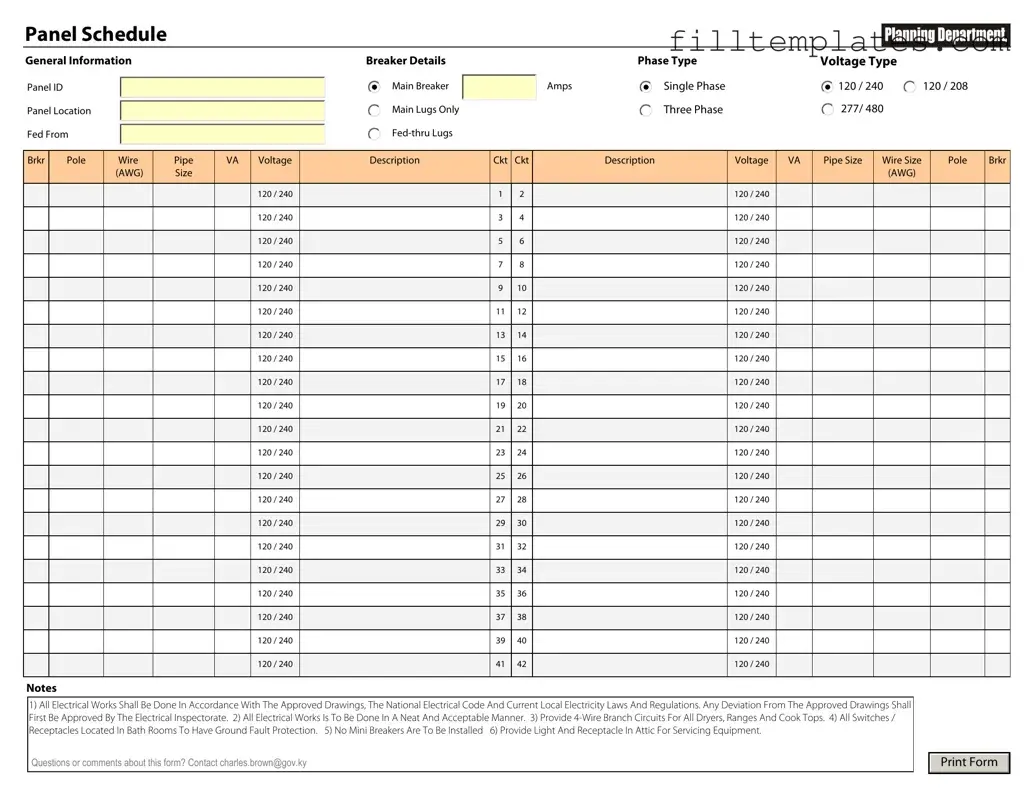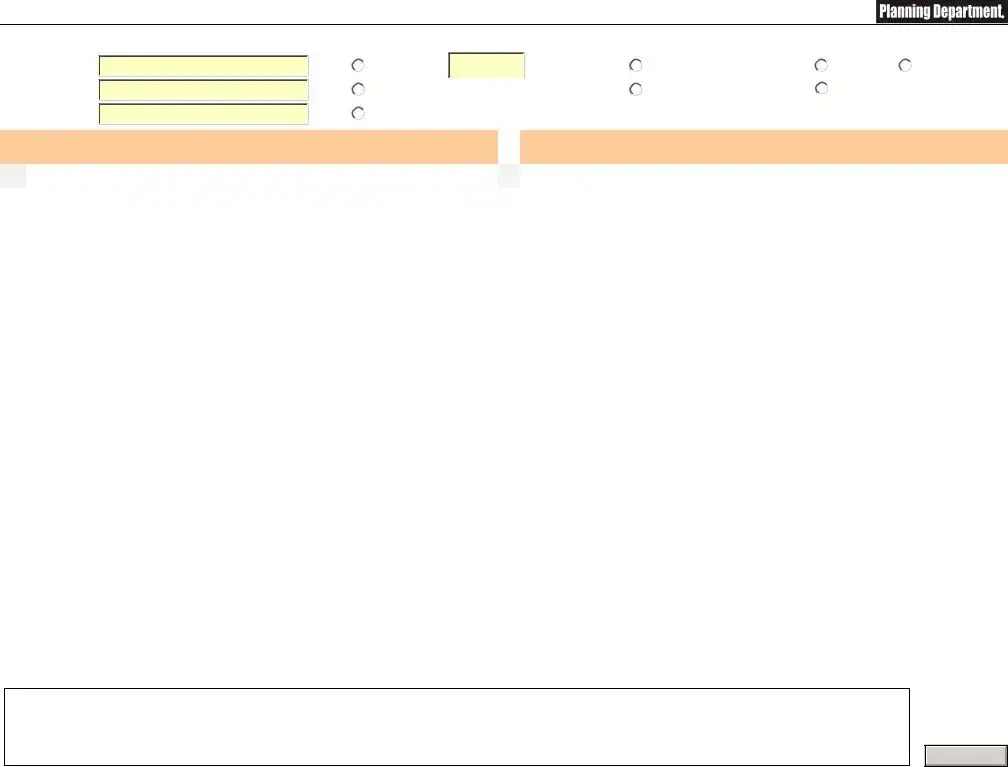The Electrical Panel Schedule form serves as a vital tool for managing and organizing the electrical distribution within a facility. It provides a clear overview of the electrical panel's layout, detailing the circuits, their corresponding breakers, and the loads they support. This form not only enhances safety by ensuring that electrical systems are properly documented, but it also facilitates maintenance and troubleshooting efforts by offering a structured representation of the electrical setup. Users will find information such as circuit numbers, amperage ratings, and designated areas served, all of which contribute to a comprehensive understanding of the electrical infrastructure. By utilizing this form, electricians and facility managers can ensure compliance with regulations, optimize energy usage, and promote efficient operation of electrical systems. Ultimately, the Electrical Panel Schedule form is an essential component in maintaining the integrity and safety of electrical installations, making it indispensable for anyone involved in electrical management and oversight.

